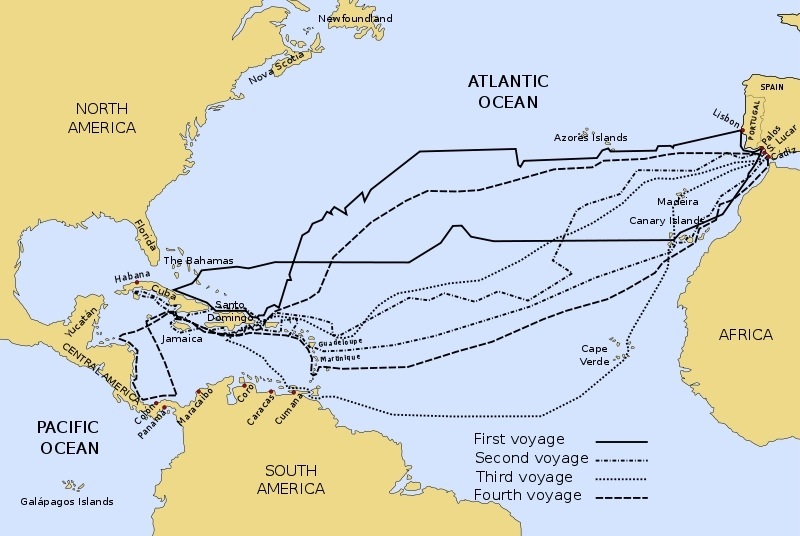The Columbian Exchange is often times praised for the positive things that it brought about such as the exchange of new animals, foods, and plants between the Old World and the New World. However, not all of the aspects of the Columbian Exchange were positive. It is also important to realize that the Columbian Exchange can also be credited for the transmission of diseases which had adverse effects on both the Old and New World alike. Diseases were transferred from Europeans to Native Americans as well as vice versa. According to Alfred Crosby, " the migration of man and his maladies is the chief cause of epidemics. And when migration takes place, those creatures who have beer genetic material has been least tempered by the variety of world diseases" (Crosby 37). Europeans and Native Americans suffered immensely from disease that were foreign to them.
Common Old World Diseases included:
Common Old World Diseases included:
- Smallpox
- Measles
- Malaria
- Yellow fever
- Influenza
- Chicken Pox
- Syphilis
- Polio
- Hepatitis
- Encephalitis
With the large numbers of disease brought by the Europeans to the New World, the Indian population was immensely impacted by these illnesses.
The Indian population was devastated by the illnesses brought by the European for several reasons:
The Indian population was devastated by the illnesses brought by the European for several reasons:
- Having no prior exposure to these ailments, the Indians were extremely susceptible to diseases.
- Since the Indians were isolated before the Europeans arrived, their immune systems were not ready to take on such disease
- Nearly all of the European diseases were communicable by air and touch, thus making it easy for the disease to spread rapidly.
Perhaps the most deadliest of diseases in regard to the Indians was smallpox. One of the first epidemics to arrive in America, smallpox was considered to be the deadliest. Smallpox is "occasionally misdiagnosed as influenza, pneumonia, measles, scarlet fever, syphils,or chicken pox" (Crosby 42). Misdiagnosis was an even more common problem four hundred years ago. Smallpox killed tens of thousands of Indians in the New World.
Indians, however, were not the only victims of disease. Syphilis, an Old World disease, had a severe effect on Europeans. Syphilis was a disease transmitted by sexual contact. It was common for sailors to contract the disease since they were without women for such long periods of time during the voyage to the New World. As Alfred Crosby puts it, " If we may assume that the nature of sailors in the sixteenth century was not radically different than in the twentieth, then we can imagine no group of the former century more perfectly suited for guaranteeing that venereal syphilis would have worldwide distribution".
- Iceland is an example of how devastating smallpox could be.
- In 1707 smallpox first appeared in Iceland, in two years 18,000 of the islands 50,000 inhabitants died of it.
Indians, however, were not the only victims of disease. Syphilis, an Old World disease, had a severe effect on Europeans. Syphilis was a disease transmitted by sexual contact. It was common for sailors to contract the disease since they were without women for such long periods of time during the voyage to the New World. As Alfred Crosby puts it, " If we may assume that the nature of sailors in the sixteenth century was not radically different than in the twentieth, then we can imagine no group of the former century more perfectly suited for guaranteeing that venereal syphilis would have worldwide distribution".
- Syphilis soon became an epidemic in Europe.
- Syphilis was often referred to as "the pox."
- The epidemic spread throughout Europe.
- It eventually made its way to Russia and Africa as well.


